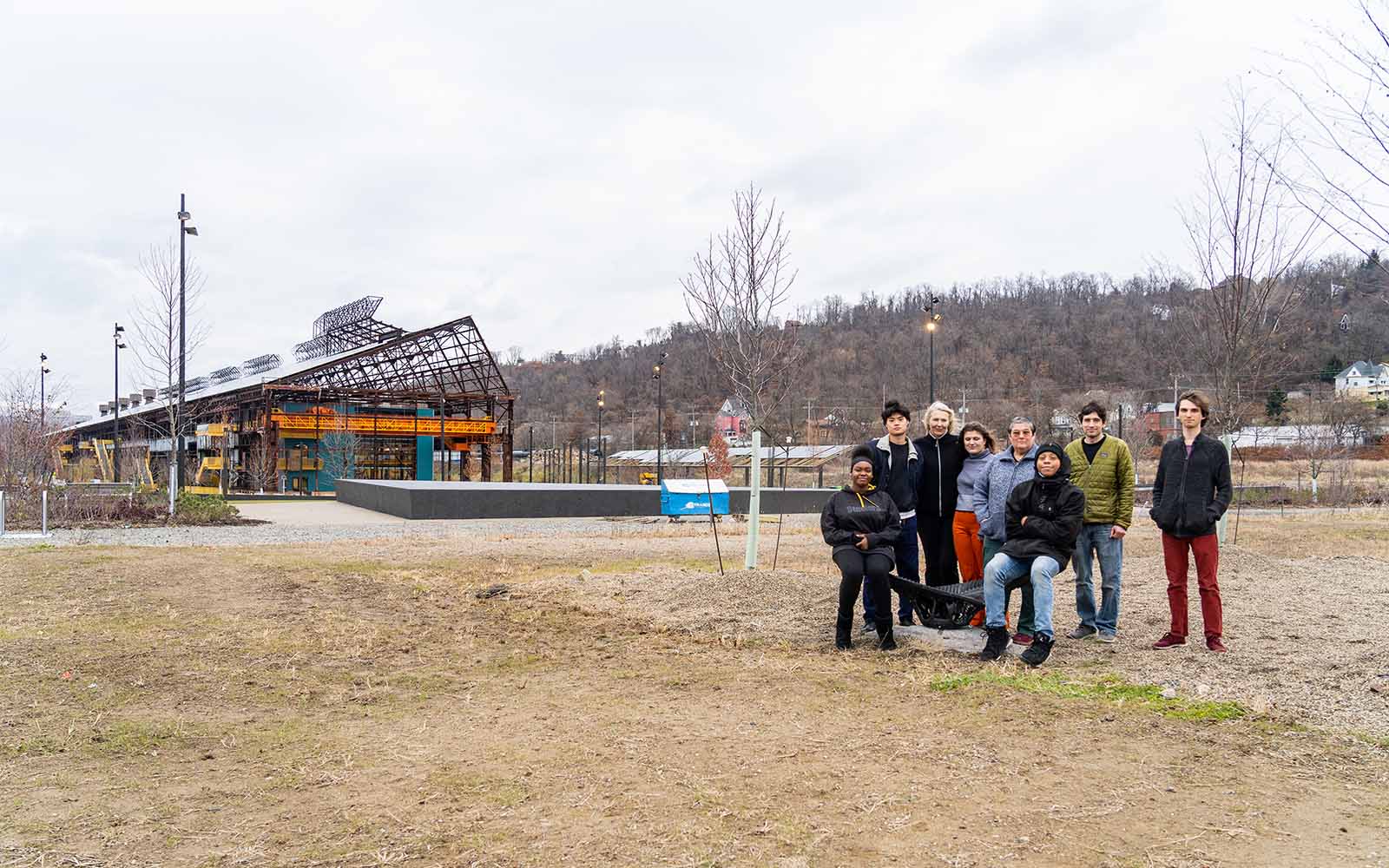
By Gita Michulka, Contributing Writer | Image: Project partners from Carnegie Mellon University’s School of Architecture and Hazelwood’s Arts Excursions Unlimited pose with the newly installed Rocking Cradles in Hazelwood Green, a project created in partnership with Center of Life and supported with funding from Rivers of Steel’s Mini-Grant Program. Photo by Lake Lewis.
Community Spotlight
The Community Spotlight series features Rivers of Steel’s partner organizations whose work contributes to the vibrancy of the Rivers of Steel National Heritage Area.
 Center of Life and CMU Team Up to Create Urban Furniture for Environmental Justice in Hazelwood Green
Center of Life and CMU Team Up to Create Urban Furniture for Environmental Justice in Hazelwood Green
When an object is created with a 3D printer, it is built up layer by layer, each one supporting the next. The same can be said for Center of Life’s urban furniture project in Hazelwood Green—a collaborative project built from the ground up, quite literally, with community members, artists, and nonprofit and university partners each supporting the layers of the work.
With funding from River of Steel’s Mini-Grant Program, Rocking Cradle—Urban Furniture for Environmental Justice took shape over the last year. These 3D-printed cradle rockers are embedded with community-created art and will serve as both seating and planters for native species. Through the design process, the team also took a deep look at the environmental impacts of industry on the landscape with a vision for how things can be created in a beneficial way moving forward.
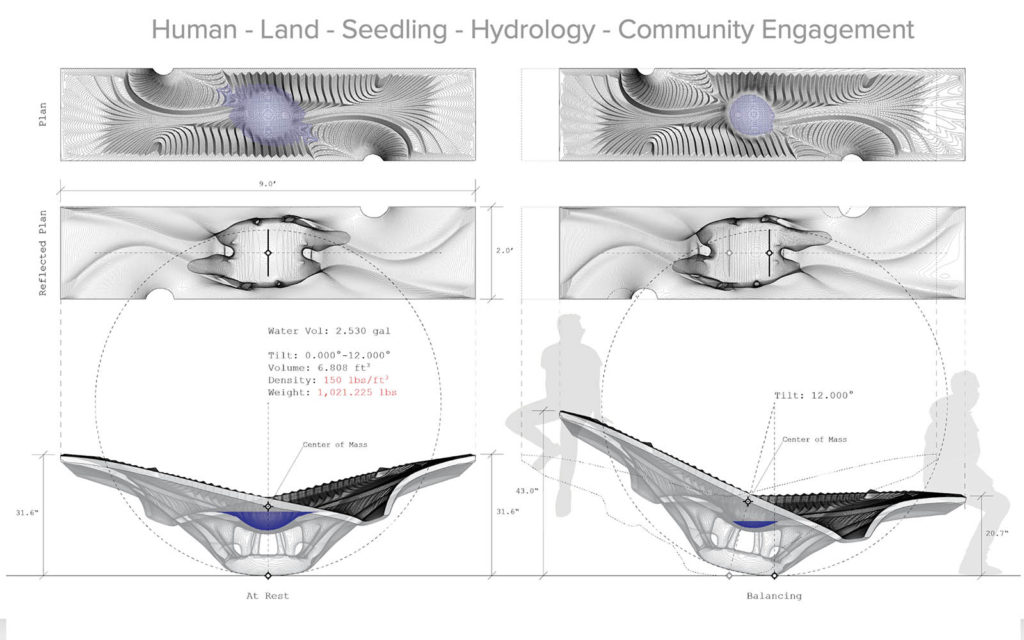
Rocking Cradle Concept Drawings (Courtesy of and copyright by Dana Cupkova)
Development Without Displacement
“The Hazelwood Green development has become a huge development property in Pittsburgh, and now that we see more and more things happening, more and more businesses establishing themselves there, the project [was pitched] to create a communal space where everyone in the community could use that space,” says Patrick Ohrman, development manager at Center of Life.
Rocking Cradle was conceived as a collaboration. Center of Life partnered with Carnegie Mellon University’s School of Architecture, led by Dana Cupkova, associate professor, track chair for the Master of Science in Sustainable Design program and a design director of EPIPHYTE Lab, and Arts Excursions Unlimited (AEU), an artist studio based in Hazelwood and led by Edith Abeyta.
This project was not only supported by funding from Rivers of Steel’s Mini-Grant Program, but also by matching funds from industry ExOne and a research grant from Manufacturing Futures Institute.
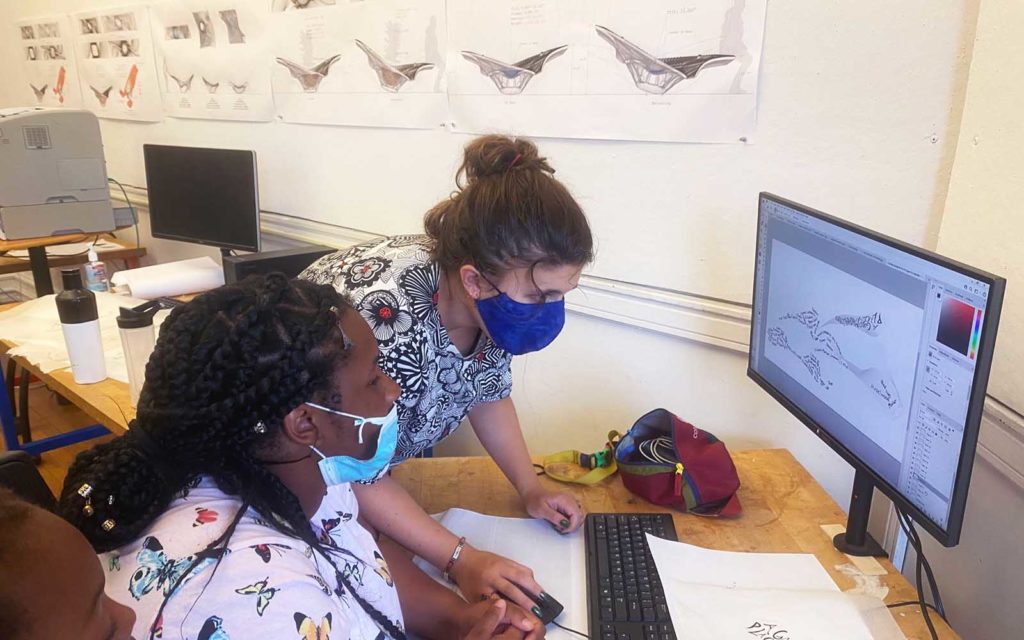
Students with Center of Life help conceive the project at CMU.
Hazelwood Green’s Postindustrial Landscape
Hazelwood, a Monongahela River community sandwiched between its industrial neighbors in the South Side and Homestead, was once home to several Jones & Laughlin Steel Company industrial plants and was a hub of industry. The area produced so much steel it necessitated the installation of the Hot Metal Bridge, which became the second most heavily guarded piece of infrastructure in the United States during WWII. The adjacent neighborhood swelled to over 13,000 residents up until the 1980s, but with the decline of the steel industry that number has dwindled to less than 6,000.
Since the early 2000s, the brownfield site along the river has undergone significant remediation, including the installation of a nursery in Hazelwood Green by the Pittsburgh Parks Conservancy, where the cradle rockers are installed.
“Hazelwood built a large portion of Pittsburgh utilizing the former steel mill on the Hazelwood Green site,” notes Ohrman. “Visiting the site to see this installation and all of the new development is an opportunity for people to really understand the history of Hazelwood and where it’s been and where it’s going now. And so instead of the site being more closed off… you know, you can walk to it, there are bike lanes down there, and we want people to feel welcome to it. We always say, we don’t want development to happen to Hazelwood, we want it to happen through Hazelwood.”
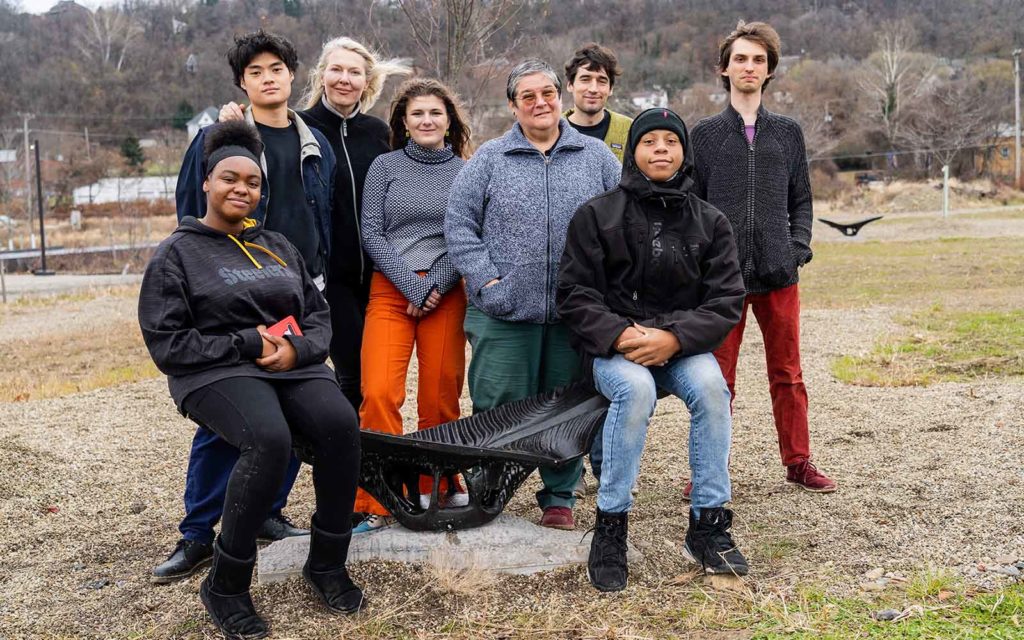
From left to right: Samuara Green (Arts Excursions Unlimited), Longney Luk, (School of Architecture CMU, graduate student), Dana Cupkova (School of Architecture CMU, associate professor), Kirman Hanson (School of Architecture CMU, graduate student), Edith Abeyta (Arts Excursions Unlimited and Center of Life), Matthew Huber (School of Architecture CMU, adjunct professor), Tayshaun Watkins (Arts Excursions Unlimited), Louis Suarez (School of Architecture CMU, graduate student). Photo by Lake Lewis.
Forging Connections
Center of Life has been active in Hazelwood as a community empowerment organization since 2001. In the 20 years since, they have engaged K–12 students, their families, and the community at large to provide diverse educational and art opportunities while also advocating for inclusive development of Hazelwood.
“As we started to craft this project—we’ve always had a great relationship with Carnegie Mellon University; they’ve always been willing to help us out in various ways, whether that’s dedicated to programming for kids, allowing students to learn from them, especially as Pittsburgh becomes more of a tech city,” says Ohrman.
“We wouldn’t have been able to afford the 3D printing without this Mini-Grant. And CMU felt it was a natural partnership to tap into in order to complete this project. When we start to have a presence down there [at Hazelwood Green] then the community can start to trust and realize that this isn’t happening without the voices of Hazelwood.”
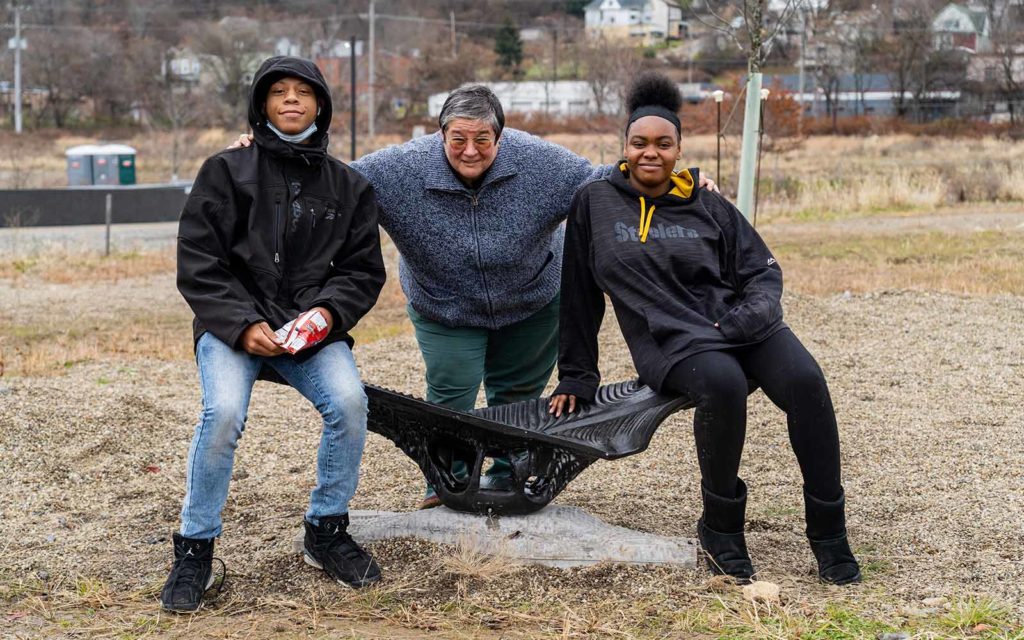
Abeyta had help with this project from two high school students enrolled in the Start on Success program. Photo by Lake Lewis.
This trust included the leadership of Edith and the involvement of AEU programming to engage Hazelwood youth in the design process as well. Working with Center of Life’s Fusion after-school program, Abeyta held workshops with students ages 5–17 twice a week to generate the text that is embedded on the rockers. The students went on photography walks around the neighborhood to capture handwritten text found on buildings and landmarks; they participated in Mad Libs-style exercises, working together to fill in the text components; and they spent time looking at specific contemporary African American artists who primarily work with text, all to generate visual content that was meaningful to the community.
“Through this art-making and design process, and working with the CMU School of Architecture, solutions, innovation, and advanced manufacturing, as well as social justice and environmental issues, are embedded in the work…it’s a great project that pulls all this content together, not just in the end-result, but also throughout the process,” says Abeyta.
After they drafted initial designs, the participating teens traveled to CMU with Edith and Dana to brainstorm and refine the designs. The students were given an intro and exposure to the 3D design process and helped finalize the pieces that would ultimately be printed from sand and installed on site.
Urban Furniture for Environmental Justice
Cupkova notes the significance of the project from an ecological viewpoint as well. “The 3D printing process is part of a bigger research trajectory that reconsiders the lifecycle of construction and contributes to carbon reduction through design of innovative ecologically conscious materials, while using construction waste to intelligently shape future environments.”
As Hazelwood Green grows, it is fitting for this kind of forward-thinking development to occur on the site of a former industry hub. And it is the hope of community leaders like Center of Life and AEU that other outside organizations take note.
“If we look at how Center of Life operates,” says Ohrman, “we have a blueprint for how communities and nonprofit organizations can forge great partnerships with larger entities like universities or businesses or other nonprofit partners. And really when you work together rather than in silos, we see there’s a lot of development that happens.”
About the Mini-Grant Program
Rivers of Steel’s Mini-Grant Program assists heritage-related sites and organizations as well as municipalities within the Rivers of Steel National Heritage Area to develop new and innovative programs, partnerships, exhibits, tours, and other initiatives. Funded projects support heritage tourism, enhance preservation efforts, involve the stewardship of natural resources, encourage outdoor recreation, and include collaborative partnerships. Through these efforts, Rivers of Steel seeks to identify, conserve, promote, and interpret the industrial and cultural heritage that defines southwestern Pennsylvania.
The Rivers of Steel National Heritage Area is one of twelve supported by the Pennsylvania Department of Conservation and Natural Resources (DCNR). Funding is provided via DCNR’s Community Conservation Partnerships Program and the Environmental Stewardship Fund to Rivers of Steel, which administers the Mini-Grant Program. Center of Life is one of six organizations who received Mini-Grant funding through this program in 2021.
Gita Michulka is a Pittsburgh-based marketing and communications consultant with over 15 years of experience promoting our region’s arts, recreation, and nonprofit assets.
If you’d like to know more about community projects supported by the Mini-Grant Program, read Gita’s recent article about the Pennsylvania Trolley Museum.

 Center of Life and CMU Team Up to Create Urban Furniture for Environmental Justice in Hazelwood Green
Center of Life and CMU Team Up to Create Urban Furniture for Environmental Justice in Hazelwood Green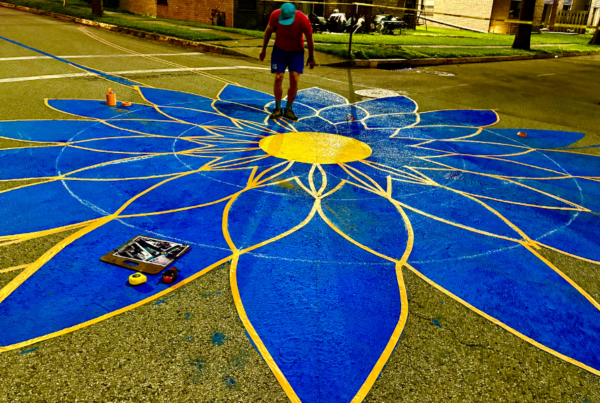






Join the discussion One Comment